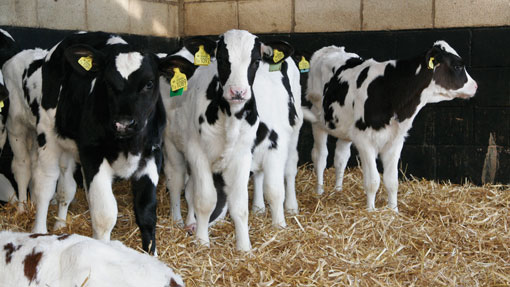Vet Watch: Prevent coccidiosis risk in lambs

Dan King
Bishopton Vets, North Yorkshire
We are finding Mycoplasma bovis in an increasing number of calf health problem investigations recently.
As well as a common cause of chronic pneumonia, Mycoplasma infection can also produce other signs such as swollen joints and inner ear infections, causing head tilt and dropped ear.
Infection often starts through contaminated milk as Mycoplasma is intermittently shed by cows within infected herds.
From here oral transmission from calf to calf is the most effective method of spreading the disease. Feeding systems where many calves share a trough or teat can allow a single calf to rapidly infect the group.
With changing management systems to accommodate larger groups of calves, it is likely Mycoplasma’s significance will rise.
Without any currently available vaccines, systems may need to adapt to meet this challenge. Pasteurisation of milk / colostrum and feeding milk powder may form part of a control plan.
Paul Verney
Severn Edge Vet Group, Shropshire
Last year’s wet conditions made coccidiosis in lambs even more prevalent and severe than normal. With this season’s early lambs approaching the risk age, we are keen to help our shepherds prevent this debilitating and costly condition.
Good management is the key to prevention, essentially keeping the ground clean and dry. For indoor lambs, use adequate bedding and at pasture, troughs should be moved routinely and regularly, not just when the ground appears muddy and dirty.
There are effective treatments for the disease, but by the time signs are seen, considerable gut damage will have occurred, slowing growth rates.
Therefore, this year we are aiming to sample lambs about one week before the risk period (this is generally 4–6 weeks of age) to check for oocyst numbers and type. This will demonstrate if treatment is necessary, help to determine the optimum time for treatment and avoid unnecessary preventative treatments.
Howard Kellock
Wensum Valley Vets, Norflok
Taking time to ensure your buildings are up to standard can be very helpful in preventing disease. Ensuring drains are working avoids standing water and sodden bedding, both of which cause high humidity.
In addition, ensuring buildings are draught free will reduce the energy the calf needs to keep warm and help them fight any infection.
Few of us will have forgotten the snow of last spring and the devastating losses that resulted. With this in mind, ensure you are prepared as can be for any adverse weather that may come our way.
Check the ewe nutrition for milk production, stock up treatment for hypothermic lambs (ask your vet for the best way to treat them) and make sure the warming box is in good condition.
Andrew Millar
Ardene House Vet Practice, Aberdeenshire
We’ve recently been asked by a few clients for our advice on mineral supplements. While some farmers already know they have a deficiency of certain minerals on their farm, others are not sure and have asked about testing.
However, the best time of year for testing copper, selenium and perhaps iodine, is when the animals are at pasture so any supplementary feeds given during the winter don’t interfere with the results.
Single tests are not that useful and between 6-10 animals can give a good overview for the group.
Gathering too can have an effect on the results so it is best to discuss what to do well in advance. Testing is not cheap, but then neither are supplementary feeds, so ensure your livestock really do need a supplement before buying it in bulk.
